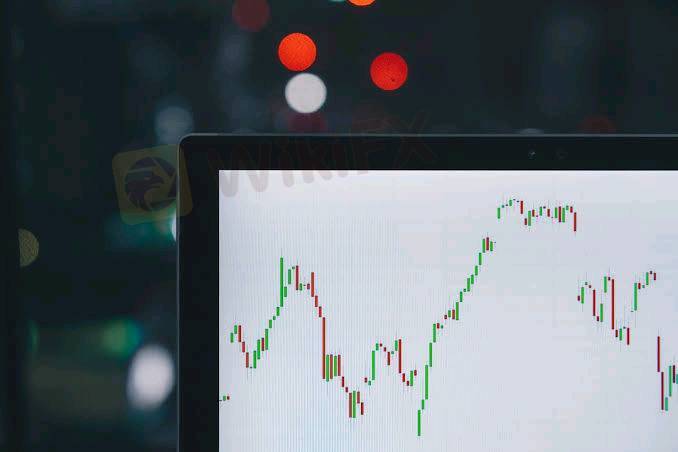
2025-01-20 17:02
Na indústriaTechnical Analysis in Forex Trading
#firstdealofthenewyearFATEEMAH
Technical Analysis in Forex Trading: A Key Tool for Market Insights.
Technical analysis is a powerful tool for forex traders seeking to gain valuable insights into market trends and patterns. By examining historical price data and applying various analytical techniques, traders can make informed decisions about buying, selling, and managing risk in the fast-paced foreign exchange market. Here's a comprehensive look at the role of technical analysis in forex trading:
Price Charts: Technical analysts use price charts to visualize and study historical exchange rate data, revealing trends and patterns that can help predict future price movements. Common chart types include line, bar, and candlestick charts.
Technical Indicators: These mathematical calculations based on price, volume, or open interest data provide additional insights into market sentiment and momentum. Popular indicators include Moving Averages, Relative Strength Index (RSI), and Bollinger Bands.
Trend Analysis: Identifying uptrends, downtrends, and consolidation periods allows traders to determine the overall market direction and potential entry or exit points.
Support and Resistance Levels: These levels indicate price points where demand or supply is expected to increase, causing price movements to pause, reverse, or break through. Traders use these levels to identify potential trading opportunities and manage risk.
Chart Patterns: Recurring chart patterns, such as head and shoulders, triangles, and double tops/bottoms, provide insights into price movement behavior and potential trend reversals.
Risk Management: Technical analysis helps traders manage risk by identifying stop-loss levels and position sizing strategies based on chart patterns, support/resistance levels, and volatility.
Combining Technical and Fundamental Analysis: While technical analysis focuses on price action, combining it with fundamental analysis (which examines economic indicators and news events) provides a more comprehensive view of the market.
Technical analysis plays a vital role in forex trading, offering valuable tools and insights for understanding market behavior and making informed trading decisions. By mastering technical analysis techniques and incorporating them into their strategies, traders can improve their risk management and overall success in the dynamic foreign exchange market.
Gostar 0
FX1439170350
Mangangalakal
Discussões populares
Análise de mercado
Brasileiros FX
Análise de mercado
Brasileiros no FOREX
Análise de mercado
Don't buy Bitcoin now! Look at my review and description in the print!
Análise de mercado
análises do mercado financeiro ao vivo confira
Na indústria
Não consegui sacar meus peofits
Na indústria
Não é possível retirar
Categoria do mercado

Plataforma

Exibições

IB

Recrutamento

EA

Na indústria

Mercado

Índice
Technical Analysis in Forex Trading
 Indonésia | 2025-01-20 17:02
Indonésia | 2025-01-20 17:02#firstdealofthenewyearFATEEMAH
Technical Analysis in Forex Trading: A Key Tool for Market Insights.
Technical analysis is a powerful tool for forex traders seeking to gain valuable insights into market trends and patterns. By examining historical price data and applying various analytical techniques, traders can make informed decisions about buying, selling, and managing risk in the fast-paced foreign exchange market. Here's a comprehensive look at the role of technical analysis in forex trading:
Price Charts: Technical analysts use price charts to visualize and study historical exchange rate data, revealing trends and patterns that can help predict future price movements. Common chart types include line, bar, and candlestick charts.
Technical Indicators: These mathematical calculations based on price, volume, or open interest data provide additional insights into market sentiment and momentum. Popular indicators include Moving Averages, Relative Strength Index (RSI), and Bollinger Bands.
Trend Analysis: Identifying uptrends, downtrends, and consolidation periods allows traders to determine the overall market direction and potential entry or exit points.
Support and Resistance Levels: These levels indicate price points where demand or supply is expected to increase, causing price movements to pause, reverse, or break through. Traders use these levels to identify potential trading opportunities and manage risk.
Chart Patterns: Recurring chart patterns, such as head and shoulders, triangles, and double tops/bottoms, provide insights into price movement behavior and potential trend reversals.
Risk Management: Technical analysis helps traders manage risk by identifying stop-loss levels and position sizing strategies based on chart patterns, support/resistance levels, and volatility.
Combining Technical and Fundamental Analysis: While technical analysis focuses on price action, combining it with fundamental analysis (which examines economic indicators and news events) provides a more comprehensive view of the market.
Technical analysis plays a vital role in forex trading, offering valuable tools and insights for understanding market behavior and making informed trading decisions. By mastering technical analysis techniques and incorporating them into their strategies, traders can improve their risk management and overall success in the dynamic foreign exchange market.
Gostar 0
Também quero comentar.
Perguntar
0Comentários

Ainda não há comentários. Faça o primeiro.

Perguntar
Ainda não há comentários. Faça o primeiro.